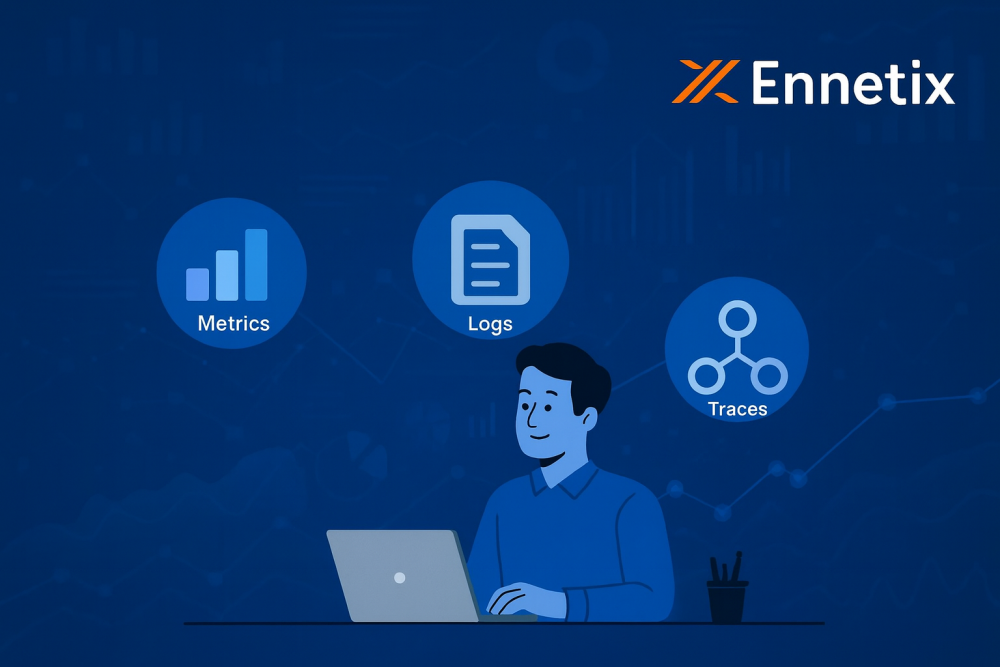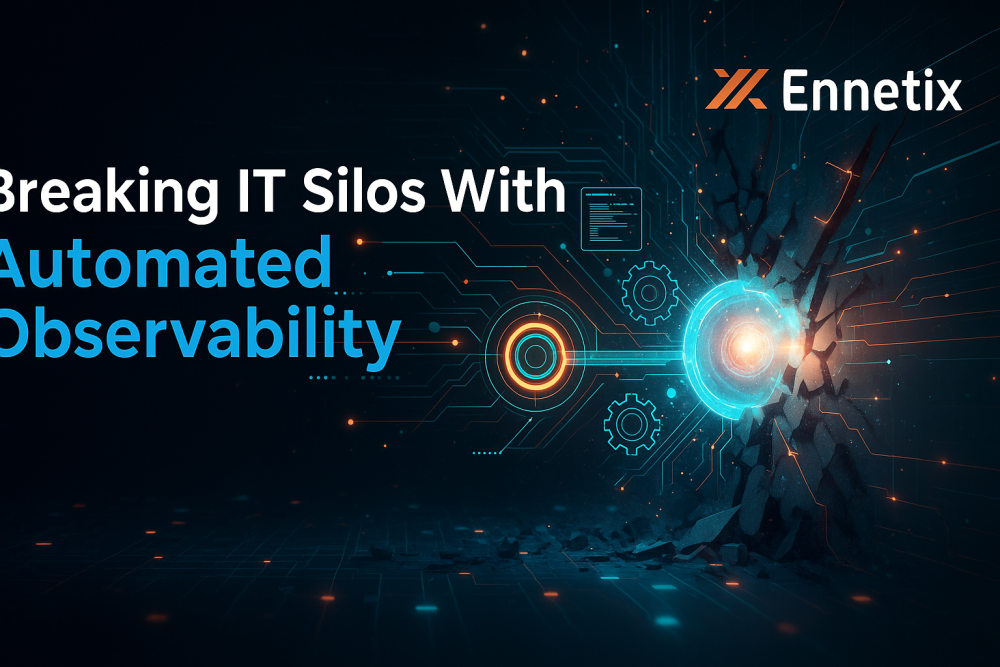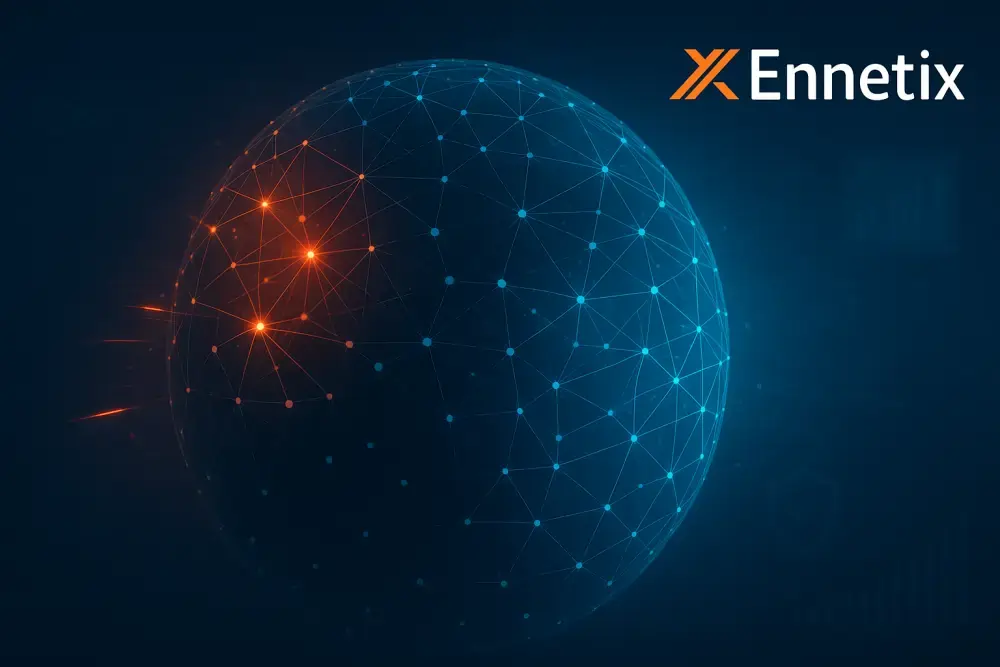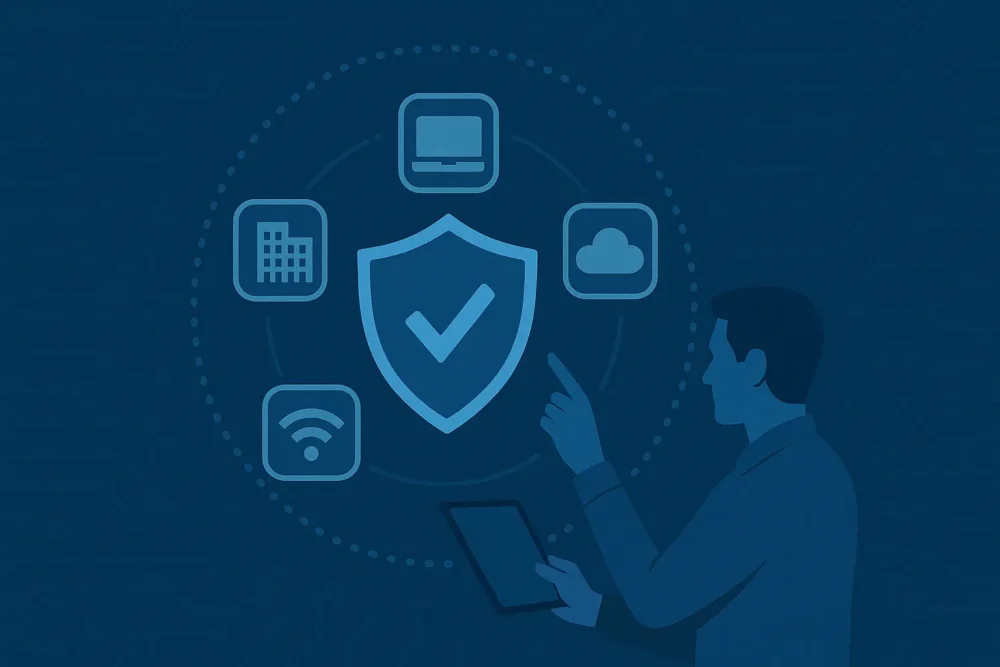
How Security Observability Powers Cyber Situational Awareness
September 24, 2025
Preventing the Next DNS Outage: Why Unified Observability Is Essential to Protect Performance and Security
November 12, 2025In modern distributed systems such as microservices, cloud, and hybrid infrastructure, understanding what’s happening “inside” your systems from the outside is a challenge. That’s where observability comes in—the ability to infer the internal state of a system based on the data it emits.
Observability refers to the ability to analyze and measure the internal states of systems based on their outputs and interactions across assets. It’s a key concept in any observability platform or observability tool, as it empowers IT teams to detect, diagnose, and resolve issues more quickly.
Observability is built on three pillars: metrics, logs, and traces. Individually, they offer different views, but together they provide a holistic, deep understanding of your system. Each pillar of observability contributes a unique dimension of insight and performance to a system
1. Metrics: Quantifying System Health
Definition & Purpose
Metrics are numerical measurements collected at regular intervals—often referred to as time-series telemetry data. Examples include CPU usage, request rate, error count, memory consumption, or latency percentiles. These metrics and traces provide a structured overview of how systems behave over time.
Alternatively, metrics can be defined as quantitative, aggregatable measurements tracked over time. They reflect how various parts of your system are performing—think CPU usage, memory consumption, request rate, error count, latency percentiles, and more.
Why Metrics Enable Observability
Metrics give you a high-level, real-time view of system health. They’re the first line of defense in any observability solution and form the foundation for alerting mechanisms.
- Easy to graph, monitor, and set alerts.
- Detect anomalies such as a sudden spike in error rate or a drop in throughput.
- Ideal for trend analysis and capacity planning.
- Provide a baseline snapshot of overall performance.
- Enable trend detection, baseline comparison, and anomaly alerting.
- They are efficient to store, visualize (via dashboards), and query (through time-series databases).
Limitations / Trade-Offs
Metrics are aggregated and may hide nuances (for example, tail latencies). They don’t always explain why something is happening.
- Sampling and aggregation can lose detail.
- Require strong instrumentation and labeling to be effective (e.g., dimensional labels).
Should be used alongside logs and traces within your observability pillars for full insight.
2. Logs: The Narrative Behind the Numbers
Definition & Purpose
Logs are timestamped records of events and state changes inside a system. They can be unstructured text, JSON, or a structured schema with metadata. Examples include event logs, error messages, transaction records, debug statements, or audit trails.
In the context of an observability platform, logs provide detailed insight into what happened, where, when, and how—giving engineers granular visibility across systems.
Why Logs Enable Observability
- Provide fine-grained context and timelines.
- Critical for diagnosing root causes, debugging, or performing forensics.
- Contain contextual metadata that ties together disparate events.
- Show exceptions, stack traces, user IDs, and system state variables.
- Enable root cause analysis when metrics show deviations.
Logs are vital for implementing observability because they help correlate data across multiple sources when issues arise.
Limitations / Trade-Offs
- Log volume can grow rapidly, creating storage and indexing challenges.
- Searching massive log datasets is resource-intensive.
- Unstructured logs are difficult to query effectively.
- Overly verbose logging can impact system performance.
To overcome these, many organizations now use observability tools with automated log management and correlation capabilities that link logs with metrics and distributed traces.
3. Traces: Understanding System Journeys
Definition & Purpose
Traces, or more specifically distributed traces, follow the journey of a request or transaction as it travels through multiple services and components. Each segment (or “span”) records timing, metadata, and relationships—allowing engineers to reconstruct the full path and timing breakdown.
Traces are essential to any modern observability tool because they reveal how requests propagate across microservices and where latency issues occur.
Why Traces Enable Observability
- Provide visibility into cross-service interactions and dependencies.
- Identify performance bottlenecks and latency hotspots.
- Pinpoint which component or service failed or slowed down.
- Offer contextual insights beyond what metrics or logs can show.
- Expose inter-service dependencies invisible in other telemetry sources.
Limitations / Trade-Offs
- Require instrumentation to propagate trace context (e.g., trace headers).
- Can add request overhead; hence, sampling is often used.
- Tracing every transaction in complex architectures can become expensive.
- Interpreting traces across large-scale microservices can be challenging.
Still, when used with metrics and logs, distributed traces offer unmatched clarity for diagnosing performance bottlenecks.
How the Three Observability Pillars Work Together
Each pillar of observability offers a different perspective—but their real power comes when used together.
Pillar | Strength | What It Lacks | How It Complements Others |
Metrics | Fast, real-time trend detection | Lacks detailed context | Detect anomalies or trigger alerts |
Logs | Deep context, full detail | Hard to scale, slow to search | Investigate root causes of metric anomalies |
Traces | End-to-end transaction visibility | Requires instrumentation | Correlate with logs and metrics for complete insights |
Beyond the Three Pillars: The Future of Observability
While the three pillars of observability—metrics, logs, and traces—remain foundational, the next evolution of observability is about deeper context and automation.
1. Context and Metadata
Without contextual data (environment, topology, service dependencies, user identities), raw telemetry can be meaningless. Advanced observability platforms now embed this context to improve signal correlation and actionability.
2. Correlation and Linking
Modern observability tools automatically correlate logs, metrics, and trace spans. For instance, linking a latency spike in metrics to a specific error trace in logs enhances investigation speed.
3. Alerts and Automation
Implementing observability is not just about visibility—it’s about automation. Modern systems can trigger proactive alerts or even automated remediation based on predefined patterns.
4. AI-Powered Analytics
AI and ML models are increasingly being used in observability solutions for anomaly detection, predictive analytics, and root cause prediction—reducing manual triage effort.
Conclusion
The three observability pillars—metrics, logs, and traces—form the backbone of any observability platform. However, observability today extends beyond these basics. To build a resilient digital environment, teams must correlate signals, add context, and implement intelligent automation using the right observability tools.
In an era of complex, distributed architectures, mastering metrics, event logs, and distributed traces is key to ensuring reliability, optimizing performance, and achieving complete system visibility.












